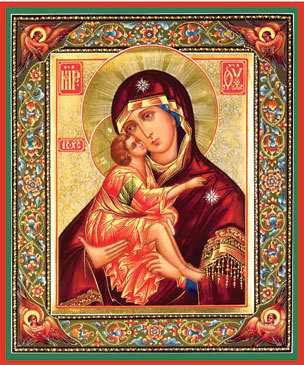While the Protestant theology for iconoclasm is warranted neither by the Old nor New Testaments, the Orthodox doctrine of icons is quite compelling. This is so, because icons have Christological significance.
It is hard to appreciate some fourth and fifth century squabbles over Christ’s nature. Instead of going into a whole history lesson, it suffices to say that the first four ecumenical councils hammered out the following essential Christological truths:
- Christ is uncreated and is fully God
- Christ is fully human
- He has a true human spirit and mind, not merely a divine mind/spirit
- His divine and human natures are inseparable
- Saint Mary truly gave birth to God, because she gave birth to the Word made flesh. That is giving birth to God–after all the divine and human natures are inseparable.
Now, we can spill over into hundreds of pages and tens of thousands of words speaking about the nuanced theological differences between Apollinarianism, Eutychianism, Nestorianism, monophysitism, dyophysitism, miaphysitism, and Nestorianism. We can wax on about how one school of theology incorrectly states that Jesus’s humanity was overwhelmed by divinity, or that the other states that his humanity and divinity were a combined hybrid, or the other that asserted that Jesus did not really have a human soul, and etcetera. To these we may respond that He was fully God and fully man, that if He lacked a human soul He would not be fully man, but if we did not allow for concrete differences between His divine and human natures we would be asserting a third nature that is distinct from those two. We may get all profound as to ask rhetorically, “How else could human bodies and souls be redeemed and transformed into the image of God unless God truly entered the world as a true man?”
Instead of all of that, we can simply look at an icon of the Mother of God holding her Son…

He sure looks human. The fact that He has a real mother is a real human-like thing too. He also appears to have a human soul–He looks at His mother adoringly and spreads His arms around her. He knows what it is like to think, feel, and love just like us. The way Saint Mary holds him is so tender that we can tell that she knows she is grasping onto Someone who is truly precious. Look at their different halos! Christ’s looks more intricate, He is divine and Mary is human. But the halos make their faces shine like Moses, so this must be a picture of what it is like to see God Himself!
All the Christological truths argued over by so many can simply be solved by looking at the icon which faithfully portrays an interaction between a mother and a Son.
It is important to take into account that icons portray crucial New Testament theological realities that images in the Old Testament could not portray.
Why? In short, when God entered this world, the rules changed.
God does not make arbitrary rules. Images of cherubs served religious purposes in the Old Testament, but none were made representing God because no one saw God. In the New Testament, images are still made to serve religious purposes but now they are also made representing God, because He was visibly made flesh. We still do not make images of the Father as we have no image of Him and the image of Christ in His place completely suffices.


Beautiful post! An interesting point about the Father though: I’m not sure it is completely absent from the tradition of iconography. There is, of course, the famous picture of the Trinity as represented by the three visitors to Abraham. But even besides this, at Rila Monastery in Bulgaria, I remember seeing the Father represented. Here is a picture from a quick Google search.
Again, a great reflection!
https://goo.gl/images/XPx4Ne
Yes I am well aware of that a lot of those father icons are from late Roman Catholic influence . I think this is because the west was influenced by Gregory the great defense of religious imagery And that the fence was that they were letters to the. Illiterate . Jon of Damascus makes the argument that Jesus Christ makes the father visible so depicting Christ is an allowable use of religious imagery . I find this theologically more compelling and this is why the father is not the norm and orthodox icons
Good catch though thanks
congrats on the priesthood btw
So, what’s the difference between art and icons? Can you not get the same understanding from a modern painting that has been judged orthodox?
Sure. You do not need to follow the eastern art form (in fact plenty of icons dont, i have a modern one in my house.) The style does have its benefits as it is both beautiful, but other worldly–which makes us think of spiritual things instead of imagine ourselves there with the art. However, I really wonder whether they will have VR icons and stuff 100 years from now. We have icons that appeal to all of our senses (auditory, visual, etcetera) but we only focus on the paintings. In reality, icons are all art.